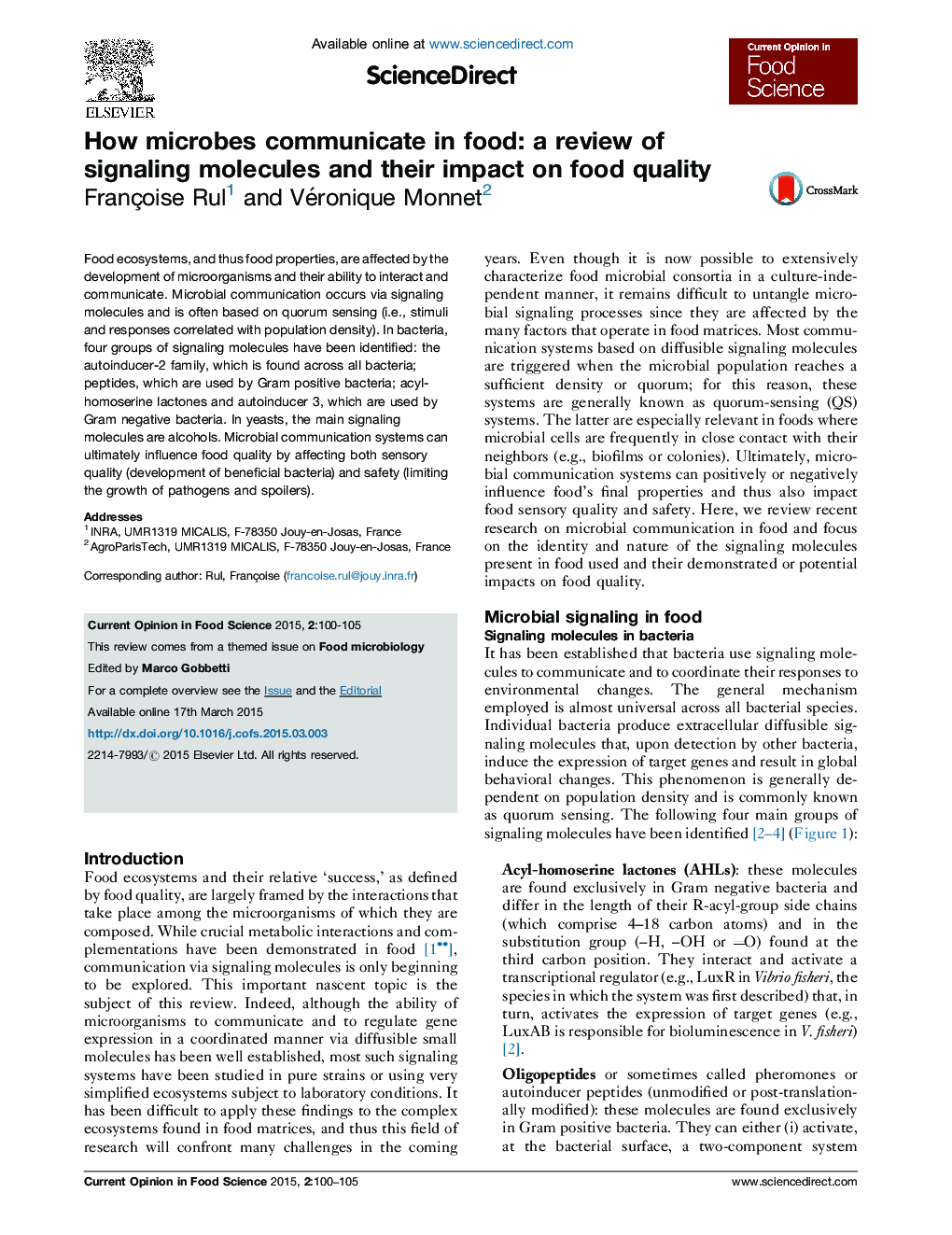| کد مقاله | کد نشریه | سال انتشار | مقاله انگلیسی | نسخه تمام متن |
|---|---|---|---|---|
| 2079775 | 1545103 | 2015 | 6 صفحه PDF | دانلود رایگان |
• Bacterial signaling involves autoinducer-2, autoinducer-3, peptides, and acyl-homoserine lactones.
• Alcohols are the main signaling molecules in yeasts.
• Microbial signaling affects food sensory quality and safety.
• Bacteriocins produced by quorum sensing can be used as natural food preservatives.
Food ecosystems, and thus food properties, are affected by the development of microorganisms and their ability to interact and communicate. Microbial communication occurs via signaling molecules and is often based on quorum sensing (i.e., stimuli and responses correlated with population density). In bacteria, four groups of signaling molecules have been identified: the autoinducer-2 family, which is found across all bacteria; peptides, which are used by Gram positive bacteria; acyl-homoserine lactones and autoinducer 3, which are used by Gram negative bacteria. In yeasts, the main signaling molecules are alcohols. Microbial communication systems can ultimately influence food quality by affecting both sensory quality (development of beneficial bacteria) and safety (limiting the growth of pathogens and spoilers).
Figure optionsDownload as PowerPoint slide
Journal: Current Opinion in Food Science - Volume 2, April 2015, Pages 100–105
